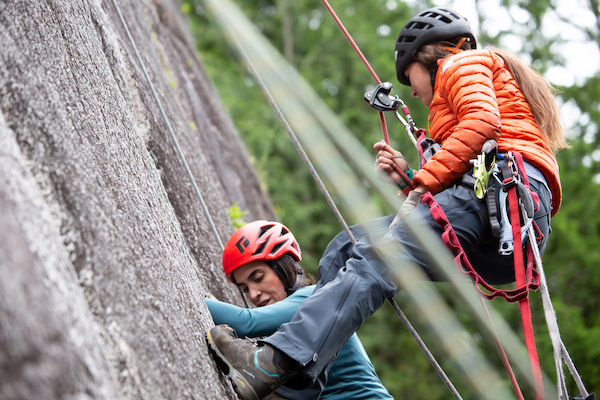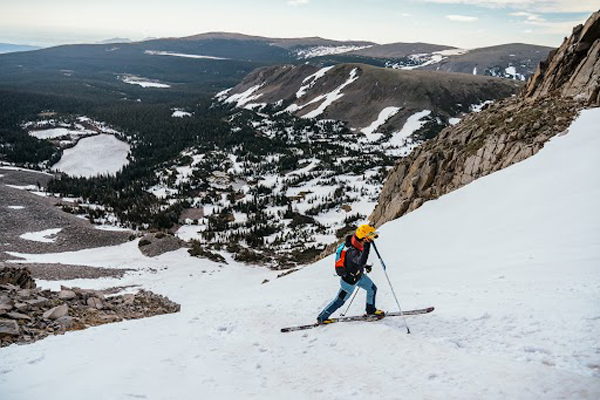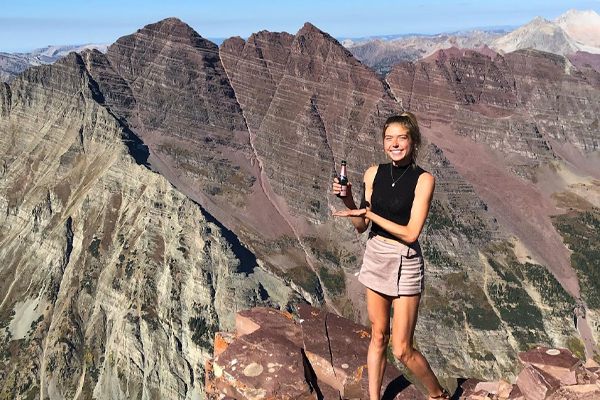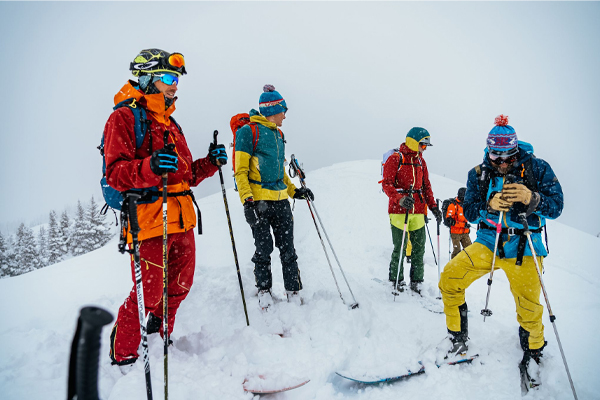Projecting South Africa's Hardest Sport Climb

All outside factors played out in my favor. I showed up fit and psyched, but no dice. What happened?
- - -
Projecting is a word that either excites or terrifies us as climbers. Completing a hard earned project can provide an incredibly pure sense of satisfaction – we struggle, we fight, we persevere, and we overcome an obstacle. Yet fear of the process, and of the possibility of a negative outcome, often deters our efforts. As climbers, we know that a few conditions must line up for us to climb at our limit. We must feel physically fit, mentally confident, 100% motivated, and free of injuries. Our skin must be dry but not too dry, thick but not too thick. We must eat well, sleep well, and find the right partners. And of course, those perfect weather conditions have to pitch. We try to manage the factors within our control and plan as best we can around the variables.
But what happens when everything lines up perfectly – the mind and body are prepared and ready, we rally with our friends and find low temperatures and a perfect breeze, yet we still find ourselves hanging on the end of the rope, attempt after attempt after attempt?
I tried "Mazawattee" (5.14c/8c+) in years past, electing South Africa’s hardest sport route as a great training asset; I didn’t realistically think I could ever complete the line, but the moves presented the perfect opportunity to build compression power, finger strength, and a bit of endurance to top it off.
I arrived in South Africa in May feeling strong and eager to try hard. To my surprise, I could suddenly climb through the first ¾ of the route clean, unlike previous years when I’d hung at practically every bolt. The crux move, a long stab requiring all 5’11” of my reach, which I had never before stuck, finally clicked. Unfortunately, I knew the winter rains would soon soak the rock for the remainder of the season. Yet miraculously, week after week, "Mazawattee" remained dry. I have a habit of letting projects suck me in, to the point where I’m unwilling to climb on anything else because I know that the next burn could be the burn, the one where I send. I was so close. I couldn’t waste a single opportunity.
Alas, after months of perfect weather and failed attempts, "Mazawattee" is finally wet and I didn’t send. The factors outside my control played out exactly in my favor, I showed up fit and psyched, but no dice. So, what happened?
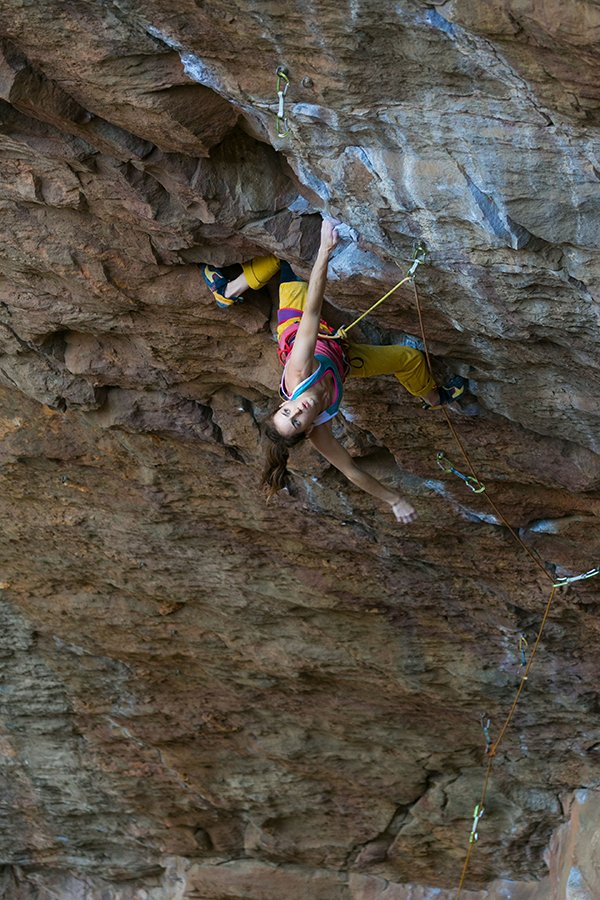 After tormenting myself, I finally realized the culprit. My strategy was all wrong.
After tormenting myself, I finally realized the culprit. My strategy was all wrong.
While I threw myself at "Mazawatee," training my muscles to efficiently execute 50 specific moves, I lost my edge. I became very good at those 50 moves, and very weak at everything else. Without that base fitness, my hopes of completing the hardest route I’ve ever worked were far out of reach. This isn’t the first time this has happened. In fact, this is normal for me. I get sucked in, I trick myself into thinking I’ll send next go and should forfeit all other efforts in order to focus on one objective, and then I get weak.
So, I compiled a “how to project” list, in hopes that next time I can follow my own advice. Numbers 5 and 9 are my biggest struggle. What are yours?
1. Choose Quality Over Grade. Grades are a great indicator of approximate difficulty, and will of course influence our route selection. However, I highly recommend against choosing a route solely because it’s a “dream grade”. Instead, consider the following characteristics when choosing a route you might be spending a lot of time on (or sitting beneath). - Location – is this a place you’ll enjoying spending time? Do you have partners willing to join you in this place? - Aesthetics – Does standing underneath the route make you want to climb it? Does the line inspire you? - History – Is the line motivating because of its historic value? - Style – Is this a style you’re good at, and enjoy climbing? Or is this a style you’re bad at but want to improve?
2. Test Drive. Give the route a few attempts. Do you enjoy the movement? If not, and this is your first time projecting, consider choosing a line you’ll enjoy climbing, rather than torturing yourself on something you hate. If you’re a seasoned project-er, or you’re tapped out on project-able lines in the area, go ahead and torture yourself.
3. Train on Your Project. Rather than beating yourself up for being so far away from the send, consider each attempt as “training”. You’re learning the moves, you’re getting stronger, you’re building power/endurance/confidence/etc. A project is something that seems impossible in the beginning, but slowly comes together with time, effort, and persistence.
4. Build a Strategy. Persistence is key, but don’t dismiss a well thought out strategy. This is my weak point in projecting. I get sucked into a project, and refuse to climb on anything but my project. Instead, try your project a few times a day, and then climb on other, easier routes to maintain fitness and psych. Similarly, I tend to always try my project from the ground up. This can lead to falling at the same move over and over. Instead, lower your hang point each time to build confidence and train your body to climb through the crux tired.
5. Set Small Goals. Not grabbing the crux draw, sticking one additional move, or even just setting up and launching for the next move are all attainable daily goals to prevent discouragement.
6. Try Hard, Every Time. No, you might not be close to sending, but trying hard on ever attempt will help you build strength quickly. Even if you know you aren’t going to stick the next move, set up for it and get as close as you can.
7. Don’t Say Take. Just because you aren’t feeling as good as you want, or you know you don’t have enough juice to climb through the next sequence, saying take isn’t going to help you in any way. Training your body to at least set up for the moves will encourage muscle memory, where as “TAKE” trains your mind to give up.
8. Breathe. We tend to hold our breath when we’re nervous or trying hard. Instead, try leaving the ground with a deep breath, and maintain that deep, steady breathing pattern all the way up the wall. I find the sound of my steady breathing distracts me from nerves, fear, or the dreaded “this is where I fell last time”. Of course, it also sends oxygen to your muscles, helping you stay fresh.
9. Don’t Give up, Give Yourself Breaks. Feeling beat down? Take a weekend or a few days to climb on fun, easier terrain. You’ll come back feeling refreshed and more motivated.
10. Just Do It. We often want the send burn to feel easy, like everything fell into place. That’s rarely how it works. At the end of the day, we just have to bear down and fight. The send can happen despite a fumbled clip, poor conditions, a stomachache, or simply not feeling your best. You never know when your hard work will pay off, so better try hard every time!
Photos: © Arjan De Kock
- - -
ABOUT THE AUTHOR
 Paige Claassen has been a member of the La Sportiva Climbing Team for 8 years.
Paige Claassen has been a member of the La Sportiva Climbing Team for 8 years.
- - -





